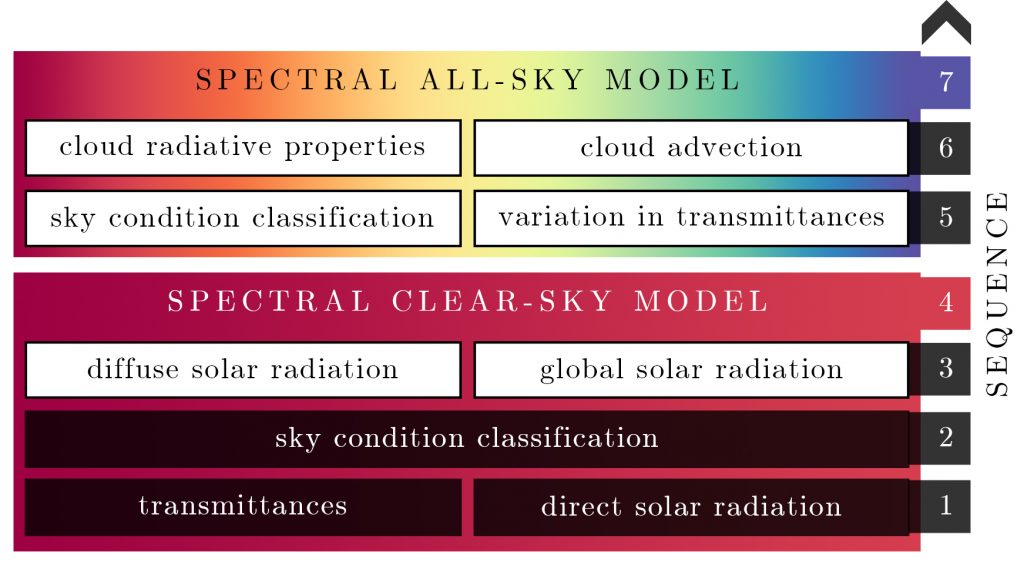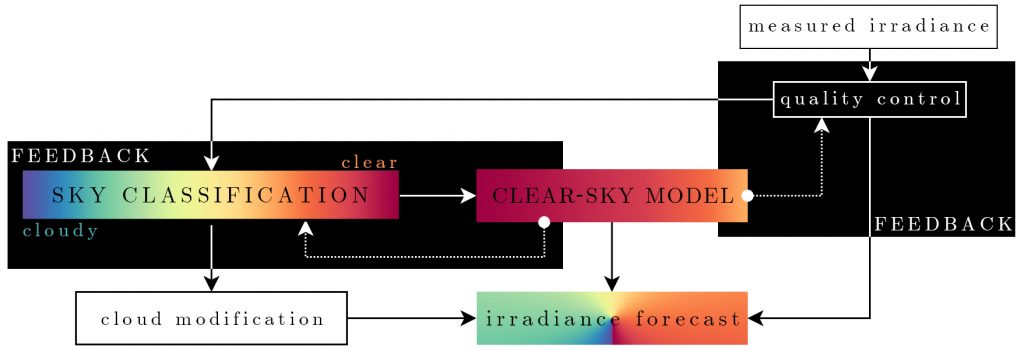Despite the increased global commitment to renewable energy (RE), developing countries still face several barriers to the diffusion of REs as competitor energy generation technologies. These impediments include technological, regulatory, social and economic barriers. Furthermore, the specific global RE barriers are superimposed on the several RE obstacles already encountered in developing countries. With the projected energy demand from developing countries rising, and trends of energy access already falling short of the 2030 target, significant global effort is needed to realise RE technologies and diffusion.
In the dissertation forming the basis of this article, Dr Carmen Lewis under the supervision of Dr Johann Strauss, both of the Department of Electrical and Electronic Engineering, Stellenbosch University, examines atmospheric transmittance for clear-sky spectral solar radiation assessment, characterisation and modelling in solar energy applications. The research aims to develop a minimal model for calculating the atmospheric transmittance of gaseous absorbers for surface radiation modelling.

(or phases) within a spectral solar radiation modelling methodology.
Background
With the projected energy demand from developing countries rising, and trends of energy access already falling short of the 2030 target, significant global effort is required to realise RE technologies and diffusion. A significant RE barrier is the variability of the energy sources induced by climate heterogeneity and weather variability. Photovoltaic (PV) and concentrated solar power (CSP) integration, therefore, necessitates a significant understanding of the intrinsic solar resource variability, which includes the solar irradiance fluctuation intensity and length, resulting from the physical properties of transitional cloud cover. In the changing landscape of solar technologies, developing countries are excluded due to increasingly complex solar methodologies and their requirement for relatively uncommon ground-based measurements. As a result, a critical review of solar radiation modelling, and the requisite independent phases within this modelling, is required for countries that are subjected to data scarcity.

Research aims and contributions
This dissertation considers two separate sub-processes within a spectral solar radiation methodology, namely sky condition classification, or rather solar resource classification, and atmospheric transmittance calculation. It further considers the modelling of clear-sky spectral direct solar radiation in atmospheric transmittance methodologies.
Recommendation for future work
Based on the research discussed in this article and the novel solar resource classification methodology developed therein, there is still capacity for future development of solar resource classification and clear-sky detection. Recommendations for future work include among others:
- validating solar resource classification methodologies;
- extending the application of the proposed method to other irradiance components as a classification methodology;
- incorporating remote retrieved aerosol parameters, reformulating the water vapour transmittance;
- formulating and validating the spectral clear-sky terrestrial beam solar radiation; and
- protracting the spectral solar radiation model to include the diffuse and global components.
The completed dissertation can be accessed at https://scholar.sun.ac.za/handle/10019.1/123697.




